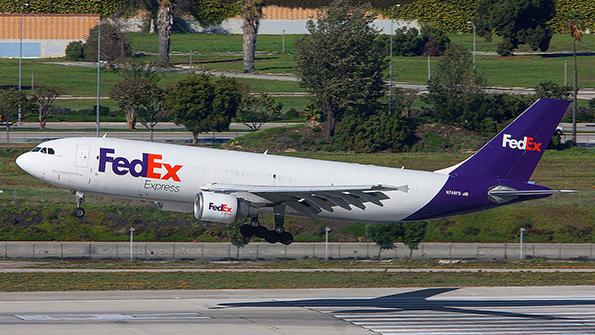
FedEx is the largest remaining operator of Airbus A300s.
Tracking in-service aircraft and fleet types is usually not difficult using databases such as Aviation Week’s Fleet Discovery. But digging out the details of the Airbus A300 in-service fleet 50 years after its first flight is complicated, and results have to be taken with some caution. Information about whether an aircraft is still flying often varies from source to source. And with a significant part of the fleet operating in Iran and Russia, even Airbus has only limited access to information, given that the sanctions imposed on those countries essentially allow no dealings with the operators there.
According to Airbus’ latest operational statistics for September, a total of 229 A300s remain in operation worldwide. Fleet Discovery allows a more detailed look at the actual status of the aircraft: it lists 182 as in service, 24 in parked or parked-reserve status and 23 more in long-term storage. Fifty-four A310s are still flying, Airbus says. Of the A300s, the vast majority are freighters.
FedEx is by some margin the largest remaining operator of the type, with 70 of the aircraft. It is followed by UPS with 52 and European Air Transport (operating on behalf of DHL) with 22. Because Iranian airlines in general have been all but unable to modernize their fleets, they have been forced to stick with their aircraft much longer. That has led to Iran becoming home to the largest A300 passenger aircraft fleet, with 21 still flying in the country, according to Airbus.
There are 38 remaining operators of the A300, and the in-service fleet is 28 years old on average. An A300 typically flies about 500 cycles or 878 hr. per year, reflecting its roles at FedEx and UPS: domestic cargo flights averaging just under 2 hr. and no more than 2-3 sectors per day. There are no extended-range twin-engine operations performance standards flights anymore.
Airbus figures show that MSN 80, registered as EP-IBS, is the oldest active A300. The aircraft is one of only two A300B2s still shown as in service. However, according to Aviation Week’s Tracked Aircraft Utilization tool, MSN 80 has not flown since December 2020. MSN 141, an A300B4 owned by Galaxy Aviation, is the second-oldest, having been delivered in 1981 (initially to Thai Airways).
The last A300 built is MSN 878, delivered to FedEx in July of 2007. Since then, the aircraft has flown 11,507 cycles and 20,364 hr. Forty-four aircraft are younger than 20 years; another 121 are between 20 and 30 years old.
Some of the early aircraft are slowly reaching the end of their service lives. The A300B4 was initially designed for 34,000 cycles and 70,000 hr.; Airbus later introduced an extended service goal of 57,000 cycles and 118,000 hr. The A300-600’s design service goal (SDG) was 30,000 cycles and 67,500 hr., but the manufacturer extended its limit twice. It is now at 51,000 cycles and 89,000 hr. The company has no plans to extend A300-600’s SDG again, given the limited number of aircraft affected. The large operators, in particular FedEx and UPS, have relatively young fleets and are generally far from reaching the cycle or hourly limits of their aircraft.
In fact, UPS is making substantial investments in its A300 fleet. The airline launched a major cockpit upgrade program in 2015 that included new screens, a flight management system and weather radar, as well as an enhanced ground-proximity warning system and other changes. The majority of the fleet has been retrofitted by now, but the program is still ongoing.
At Airbus, the A300 (and A310) fleets are being managed by the out-of-production organization that is also handling the A380. They do not manage the A340, since it is seen as a sister program to the A330, which is still being built. Pascal Vialleton, the A300 head of program and chief engineer who also runs the technical directorate, says no new maintenance or in-service issues have surfaced for some time as the program is “very mature.” But ensuring spares availability has become a challenge. When manufacturing of a specific part has to be relaunched, the directorate turns the initial design drawings into digital 3D models as it retro-engineers the parts.






Comments